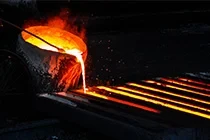Dec . 16, 2024 19:18 Back to list
high quality solid adsorbent
High-Quality Solid Adsorbents Innovations and Applications
The demand for high-quality solid adsorbents has surged in recent years, driven by the increasing need for efficient pollutant removal and resource recovery strategies in various industries. Solid adsorbents play a crucial role in wastewater treatment, gas purification, environmental remediation, and even in industrial processes such as catalysis and chromatography. This article explores the advancements in solid adsorbent materials, their applications, and the future of adsorption technology.
Understanding Adsorption
Adsorption is a surface phenomenon where molecules from a gas or liquid phase adhere to a solid surface. This process is essential for removing contaminants, recovering valuable resources, or even facilitating chemical reactions. Solid adsorbents are typically characterized by their high surface area, porosity, and chemical stability, which enhance their ability to attract and retain particles.
Types of Solid Adsorbents
Various materials serve as solid adsorbents, each with unique properties tailored for specific applications. Common examples include activated carbon, zeolites, metal-organic frameworks (MOFs), and silica gels.
1. Activated Carbon Known for its exceptional adsorption capacity, activated carbon is derived from carbonaceous materials through physical or chemical activation. It is widely used in air and water purification because of its ability to adsorb a range of organic and inorganic contaminants.
2. Zeolites These crystalline aluminosilicate minerals possess a unique framework that provides ion-exchange properties and selective adsorption capabilities. Zeolites are particularly effective in gas separation and catalysis applications due to their tunable pore sizes.
3. Metal-Organic Frameworks (MOFs) These are a class of porous materials consisting of metal ions coordinated to organic ligands. MOFs have gained attention for their extraordinarily high surface areas and customizable structures, making them suitable for gas storage, separation, and catalysis.
4. Silica Gel Often used as a desiccant, silica gel is effective for moisture control. Its porous structure allows for high adsorption of water vapor and is commonly employed in packaging to protect sensitive products.
Innovations in Solid Adsorbent Technology
high quality solid adsorbent

Recent advancements have focused on enhancing the efficiency, selectivity, and sustainability of solid adsorbents. Research has explored the functionalization of existing materials to improve their adsorption performance. For instance, adding specific groups to the surface of activated carbon or zeolites can enhance their affinity for targeted pollutants.
Moreover, the development of hybrid materials, combining the strengths of multiple adsorbents, has shown promising results. For example, integrating MOFs with activated carbon can enhance the overall adsorption capacity and selectivity for certain gases. This combination utilizes the high porosity of MOFs and the extensive surface area of activated carbon, resulting in superior performance.
Another significant trend is the exploration of bio-based adsorbents derived from agricultural wastes and biomass. These sustainable materials not only provide efficient adsorption capabilities but also contribute to waste reduction and environmental conservation. Materials like chitosan, biochar, and cellulose-based adsorbents have been studied for removing heavy metals, dyes, and other pollutants from water.
Applications of Solid Adsorbents
The versatility of solid adsorbents fuels their application across various sectors
- Environmental Remediation Solid adsorbents are integral to treating contaminated water bodies and soils, effectively removing toxic substances, heavy metals, and organic pollutants.
- Industrial Processes In chemical engineering, solid adsorbents are essential for gas separation, purification, and catalytic processes, enhancing efficiency and product quality.
- Resource Recovery Adsorption technology plays a vital role in recycling metals and precious resources from waste products, ensuring sustainable practices in manufacturing.
- Healthcare Novel adsorbents are being developed for biomedical applications, including drug delivery and biosensors, highlighting the expanding role of adsorption in health technologies.
Conclusion
High-quality solid adsorbents are at the forefront of addressing environmental challenges and improving industrial efficiency. As research continues to innovate in this domain, we can anticipate the development of more effective, sustainable, and versatile materials that will enhance our ability to manage resources and combat pollution. As industries and researchers collaborate to harness the full potential of solid adsorbents, the future of adsorption technology looks promising and pivotal for a cleaner and more sustainable world.
-
High-Quality Fe-C Alloy Leading Manufacturers & Spherical Alloy Materials Supplier
NewsJun.10,2025
-
Premium Low Nitrogen Recarburiser Supplier & Manufacturer – High Quality Exporters
NewsJun.10,2025
-
DT4 High-Quality Magnetic Materials Leading DT4 Manufacturer & Supplier
NewsJun.10,2025
-
High-Performance Spring Steel Suppliers Custom Solutions
NewsJun.10,2025
-
Premium SWRCH6A Manufacturer Steel Wire Supplier & Factory
NewsJun.10,2025
-
Premium Mild Steel Wire Rod Supplier & Manufacturer
NewsJun.10,2025
